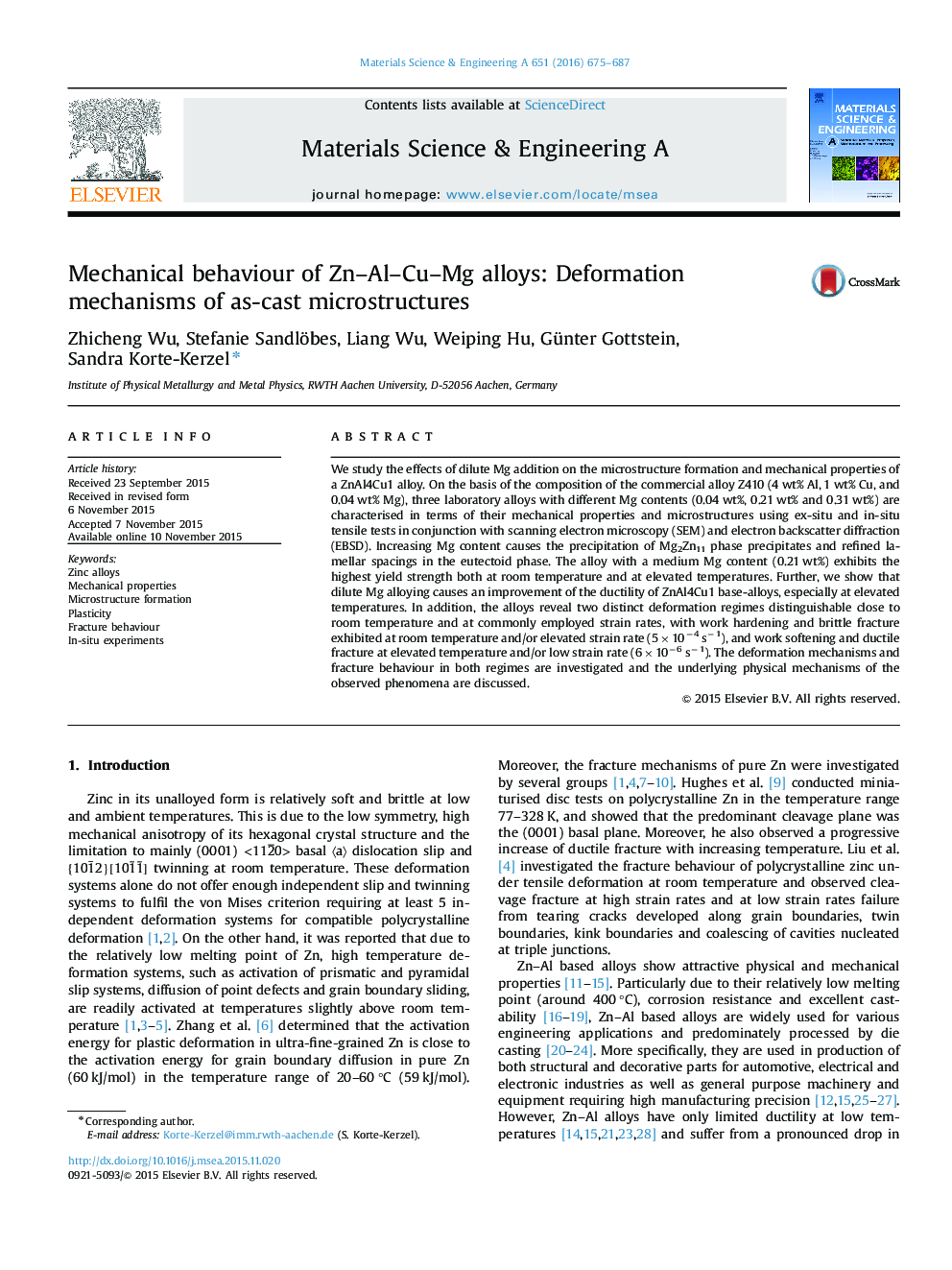| Article ID | Journal | Published Year | Pages | File Type |
|---|---|---|---|---|
| 7976216 | Materials Science and Engineering: A | 2016 | 13 Pages |
Abstract
We study the effects of dilute Mg addition on the microstructure formation and mechanical properties of a ZnAl4Cu1 alloy. On the basis of the composition of the commercial alloy Z410 (4Â wt% Al, 1Â wt% Cu, and 0.04Â wt% Mg), three laboratory alloys with different Mg contents (0.04Â wt%, 0.21Â wt% and 0.31Â wt%) are characterised in terms of their mechanical properties and microstructures using ex-situ and in-situ tensile tests in conjunction with scanning electron microscopy (SEM) and electron backscatter diffraction (EBSD). Increasing Mg content causes the precipitation of Mg2Zn11 phase precipitates and refined lamellar spacings in the eutectoid phase. The alloy with a medium Mg content (0.21Â wt%) exhibits the highest yield strength both at room temperature and at elevated temperatures. Further, we show that dilute Mg alloying causes an improvement of the ductility of ZnAl4Cu1 base-alloys, especially at elevated temperatures. In addition, the alloys reveal two distinct deformation regimes distinguishable close to room temperature and at commonly employed strain rates, with work hardening and brittle fracture exhibited at room temperature and/or elevated strain rate (5Ã10â4Â sâ1), and work softening and ductile fracture at elevated temperature and/or low strain rate (6Ã10â6Â sâ1). The deformation mechanisms and fracture behaviour in both regimes are investigated and the underlying physical mechanisms of the observed phenomena are discussed.
Keywords
Related Topics
Physical Sciences and Engineering
Materials Science
Materials Science (General)
Authors
Zhicheng Wu, Stefanie Sandlöbes, Liang Wu, Weiping Hu, Günter Gottstein, Sandra Korte-Kerzel,
